Samsung Galaxy Note 7 vs Samsung Galaxy S7 Edge
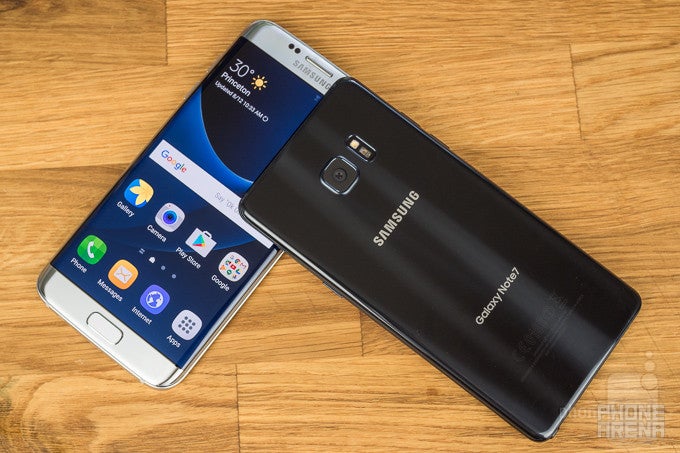
The Samsung Galaxy Note 7 has been discontinued following numerous reports of units catching fire or exploding. In the interest of safety, users who still have a Note 7 in their possession must return the unit to Samsung.
Introduction
The relationship between smartphone shoppers and curved-screen handsets is a complicated one. Models that tried to build the phone around the curve failed to really catch on, and it's been a while since we've seen a unit like the Galaxy Round or LG Flex. But while those looks have fallen from favor, subtler curves have proliferated, and early efforts like the Note Edge have given way to the current crop of curved-edge-screen devices.
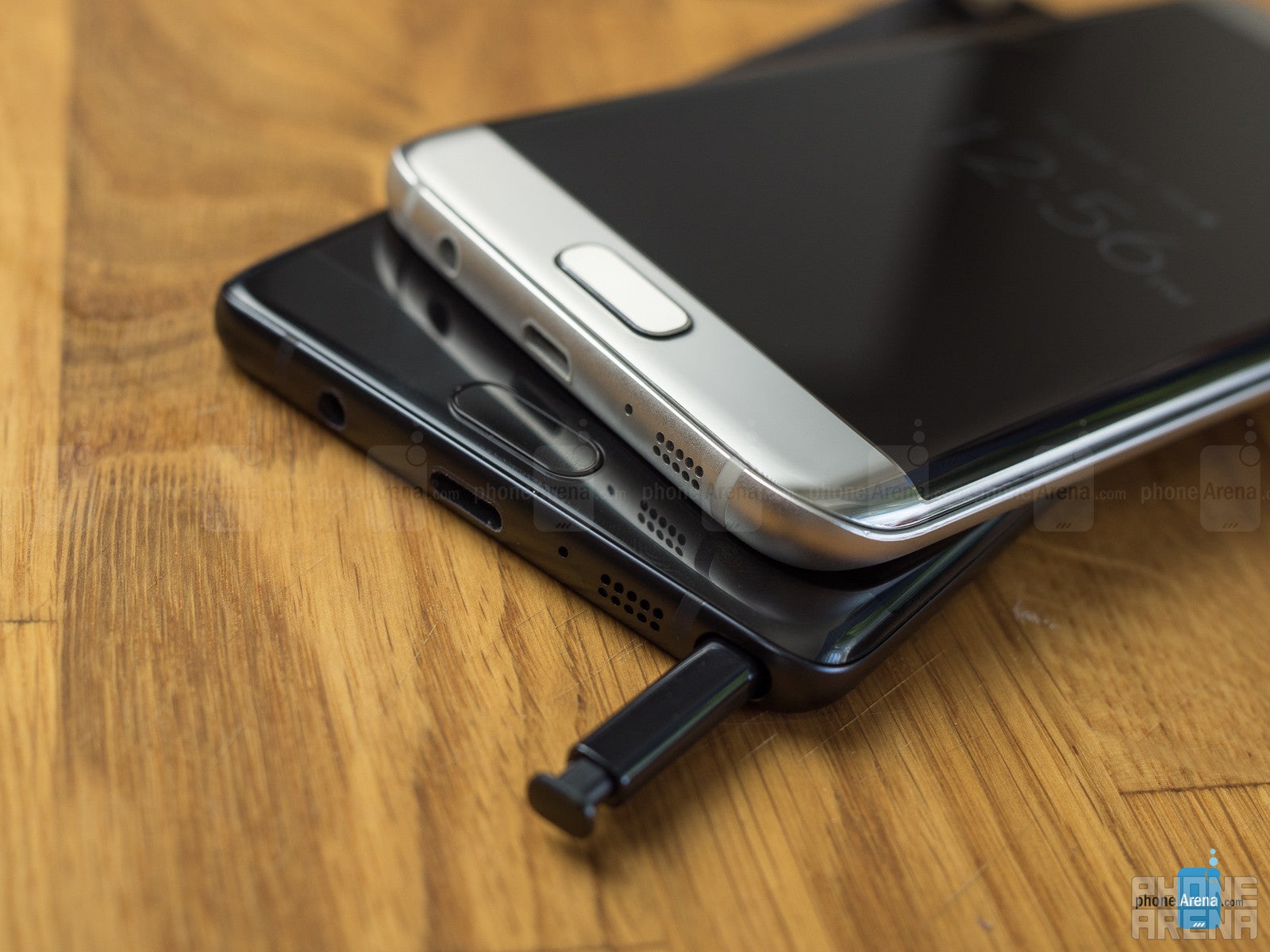
The Note 7 may do a lot that the GS7 edge doesn't, but these are still two handsets cut from the same cloth. Let's take a look at just how the pair measures up, and how the Note 7 builds on the groundwork the Galaxy S7 edge helped establish.
Design
Samsung's curves come full circle
These two are both phones that use their design to stand out in a busy market, reaching out to shoppers with their still-quite-rare curved-edge looks. And while the handsets Samsung's built around those curved screens are very similar, there are a few differences that highlight the manufacturer's evolving design language.
Obviously the Galaxy S7 edge is going to lack things like the Note 7's S Pen, but otherwise the hardware making up these two models looks remarkably similar. We're talking the same layout of ports and buttons, same slight camera bumps, and same general appearance.
The one significant design departure the Note 7 makes is a subtle one, using front and glass back panels with the same degree of edge curvature for a symmetrical look. The Galaxy S7 edge also has curved back glass, but with a less pronounced curve than we see around front. This gives the GS7e a slightly more angular, edgy rim to its body, while the Note 7's borders form a smooth curve all around.
Display
A familiar screen, sprinkled with HDR goodness
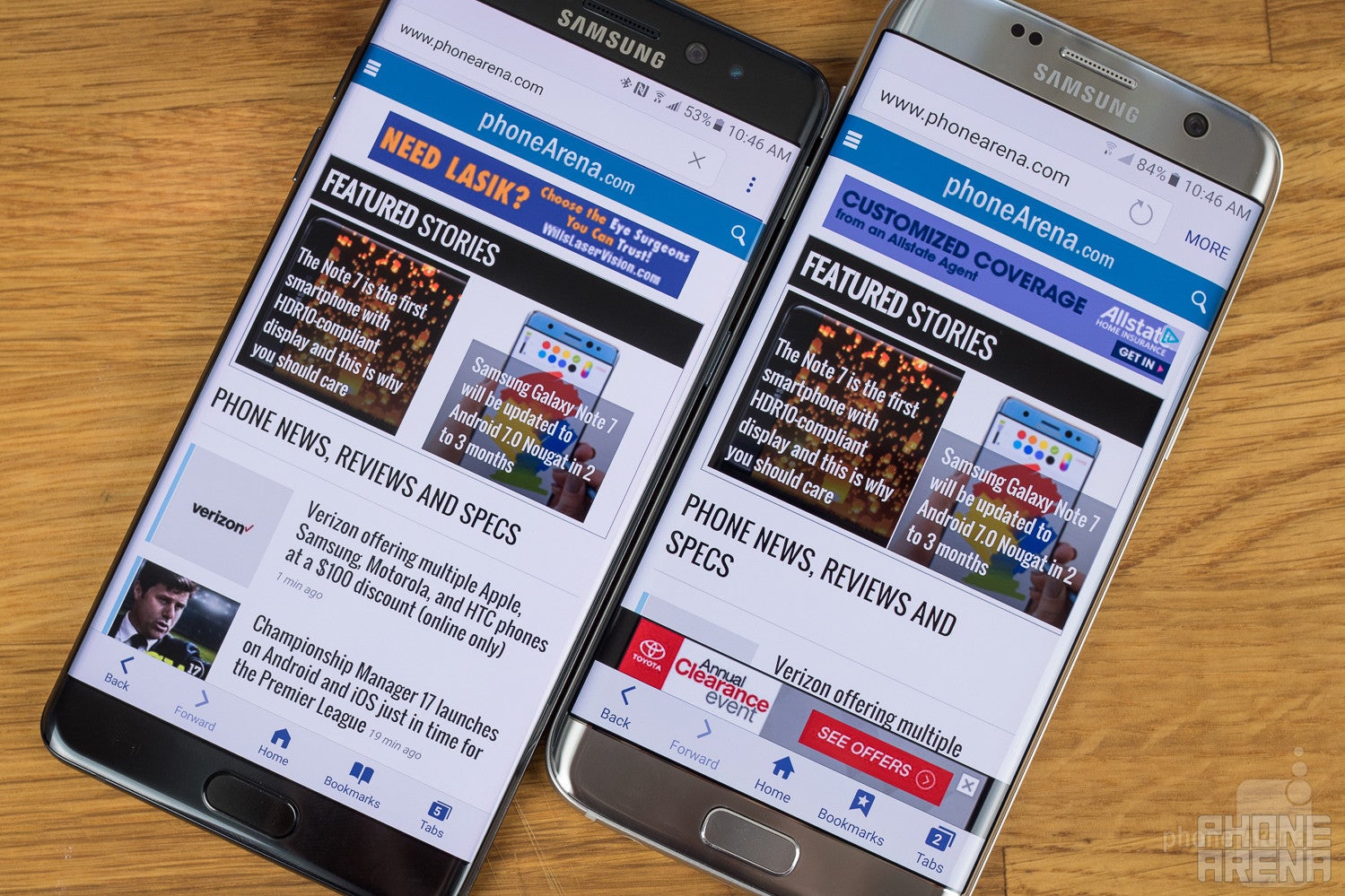
By now you're painfully aware of how these Galaxy phones share the same type of dual-curved-edge displays, but it's more than just the shape of the screen these two models have in common: both are using QHD 1440 x 2560 AMOLED panels.
We're talking about pixel densities north of 500 per inch – so you can rest easy knowing that things are going to look sharp.
The Note 7 does pick up a few new tricks compared to the earlier GS7 edge, and in terms of its screen we see Samsung give the new Note the ability to play HDR10-encoded video for better dynamics and richer colors. Of course, that feature's limited by the availability of HDR content right now.
Interface
Samsung's come a long way from the early days of TouchWiz
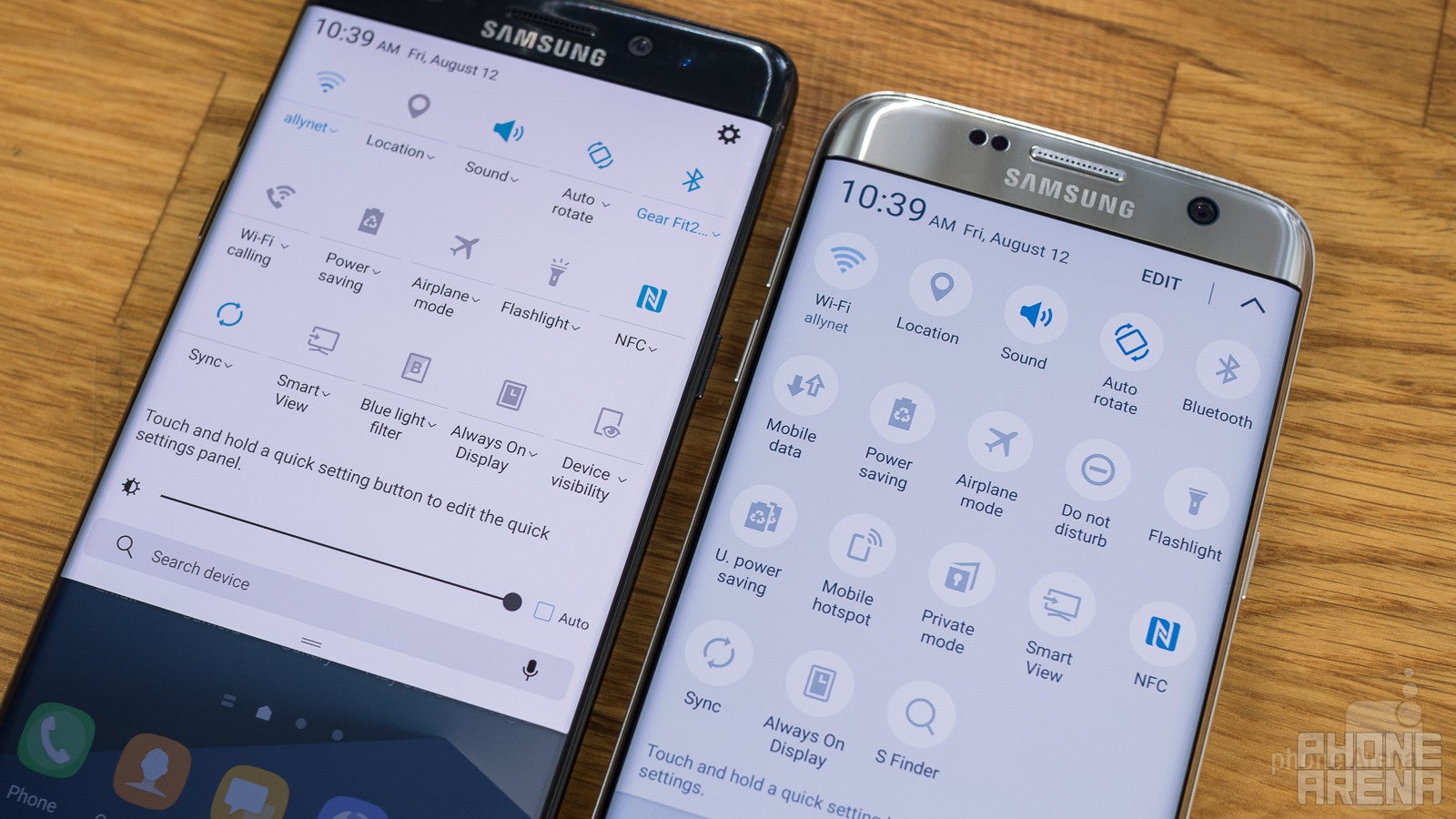
The Galaxy Note 7 marks the first time Samsung's Edge UX arrives on a proper Note model, and users can expect the same kind of screen-side gesture interactions they're familiar with from the GS7 edge. That's just the start of things, though, and the Note also runs Samsung's new Grace UX for a cleaner, easier-to-navigate implementation of TouchWiz.
Considering how much in common the Note 7 and GS7 edge have, and how the GS7e's still a quite new phone, we're optimistic that we'll see the majority of the Note 7's interface enhancements back-ported to the GS7e; for now, though, Samsung's yet to commit to any such changes.
Biometric fingerprint authentication is back again with the Note 7, now joined by new iris-scanning capabilities. At this point, the tech's not nearly refined enough to replace fingerprint scanning for most users, but it's still nice to see Samsung trying something new.
Processor and Memory
Sometimes Samsung likes to use the Galaxy Note to introduce new hardware. But with the Note 7, we're not pushing any boundaries for the phone's processor and memory: it's basically just what we got already in the Galaxy S7 and Galaxy S7 edge.
That's not necessarily a bad thing – the Snapdragon 820 (or Exynos 8890, depending on the market you find yourself in) in these handsets is just about the most popular flagship-class option at the moment, and in choosing this silicon Samsung's given Note 7 shoppers the comfort of knowing exactly what kind of performance they can expect.
But while there may not be a faster chip within the Note 7, nor a ton of extra RAM, we do see Samsung finally break down and do away with the phone's 32GB storage option, making 64GB the new default level. Combined with the return of microSD expansion, that gives the Note 7 vast reserves of available (and possible additional) storage.
Internet and connectivity
Samsung pulls up a chair to the USB Type-C table
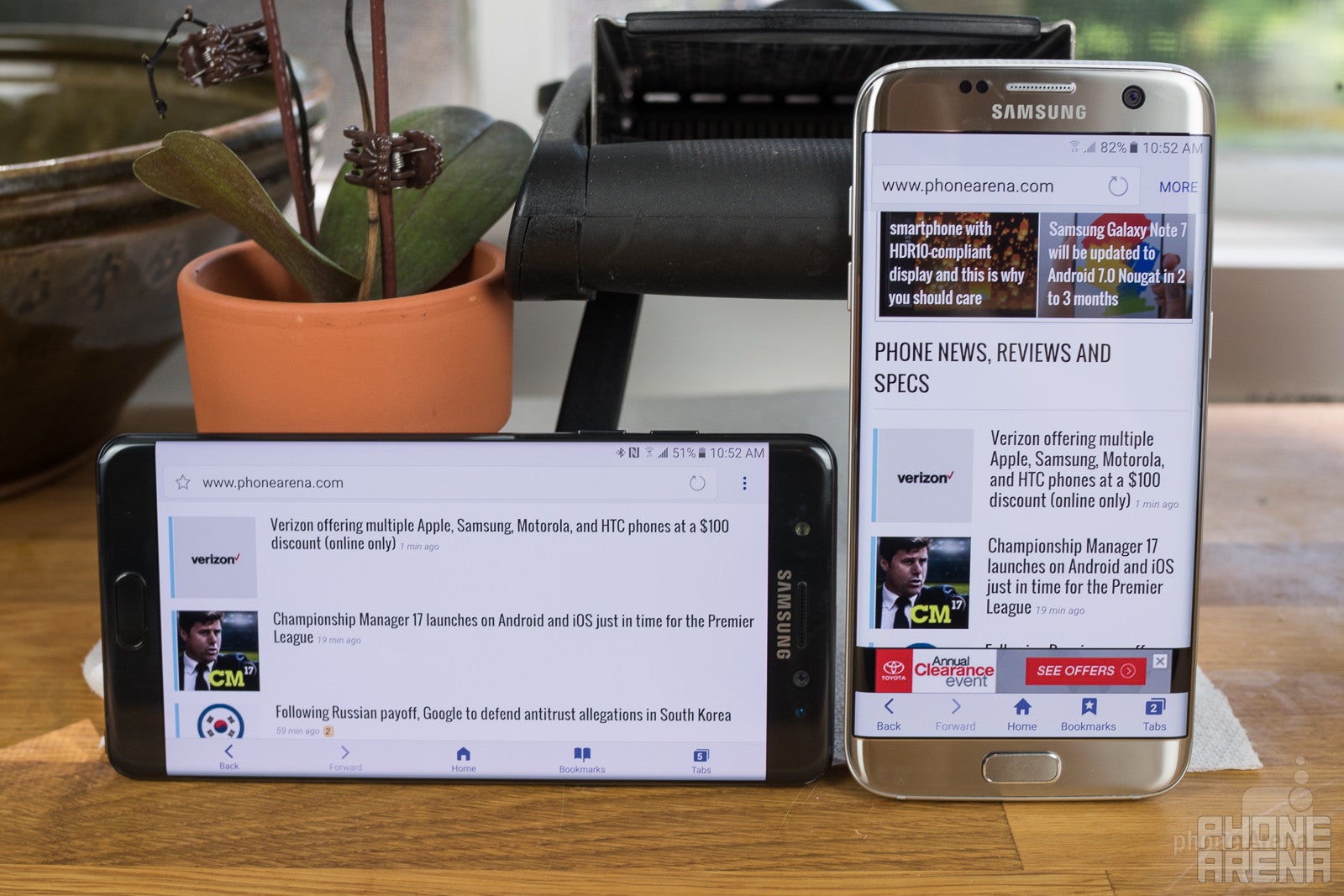
The Note 7 doesn't introduce any new cellular tech the Galaxy S7 edge missed, but it does make an important wired-connectivity change, ditching the handset's micro USB port for charging and data and going with the new reversible USB Type-C interface.
Other Android OEMs have already embraced the new connector, and it felt like it was just a matter of time before Samsung also got on board. Now that it has, new accessories (like a revamped Gear VR) are incoming, but don't sweat it if you've still got a lot of legacy hardware; with an included adapter, the Note 7 can still accept all your old micro USB cables.
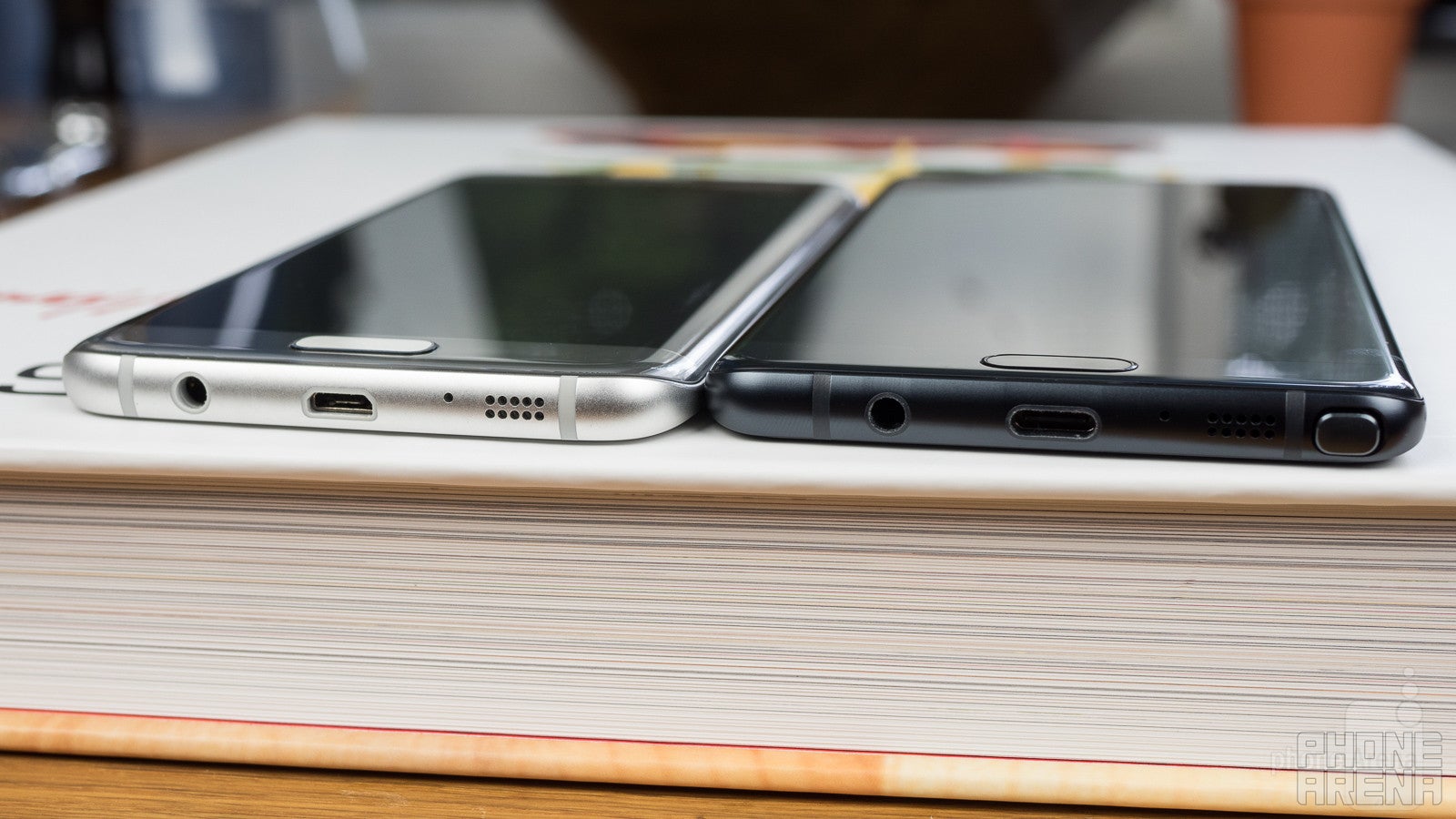
Camera
A blast from the not-too-distant past
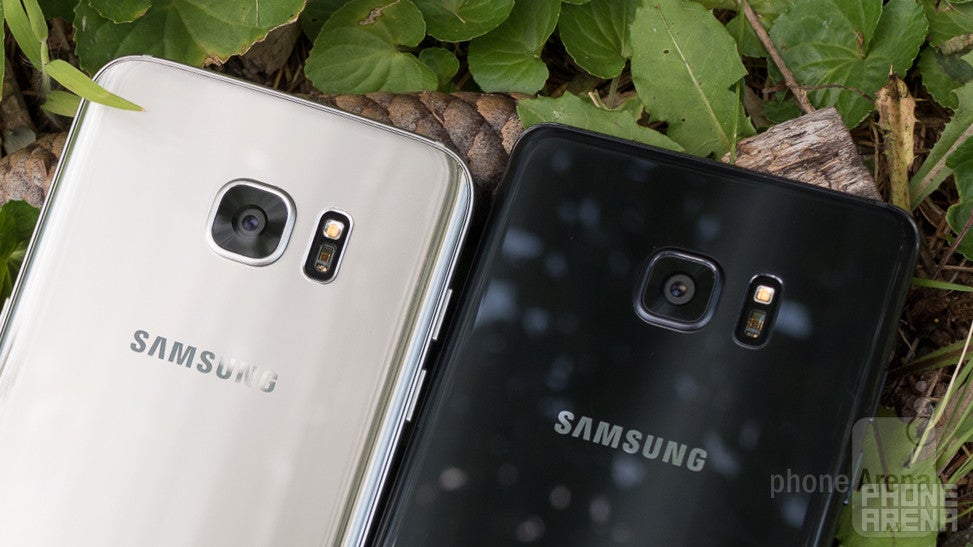
Like with the phone's processor and memory, we see theNote 7 staring in the mirror at the Galaxy S7 edge: the combo of the 12MP main camera and 5MP front facer we met earlier this year on the Galaxy S7 and GS7 edge worked so well for those phones, Samsung's brought them back for the Note 7.
That's a great move on Samsung's part, and we have to give the company credit for showing a little restraint and not trying to fix what wasn't broken. But even without all-new hardware, there's still room for camera improvements, which the Note 7 picks up in the form of a revamped, swipe-based UI. All the functionality from the GS7e is still there, but you should be able to access it with fewer taps on the Note 7.
Multimedia

You're not going to see a huge difference in the multimedia playback capabilities of the Note 7 and GS7 edge: they've got similarly sized screens of the same resolution and using the same display tech, and while we picked up some really minor tonal differences between the speakers on these phones, you'd be hard-pressed to identify one as the clearly superior option.
The Note 7 does enjoy the benefits of its HDR video support, though as we mentioned earlier, that's fully contingent on the availability of such footage – and while that's certainly growing, it's far from everywhere just yet.
Call quality
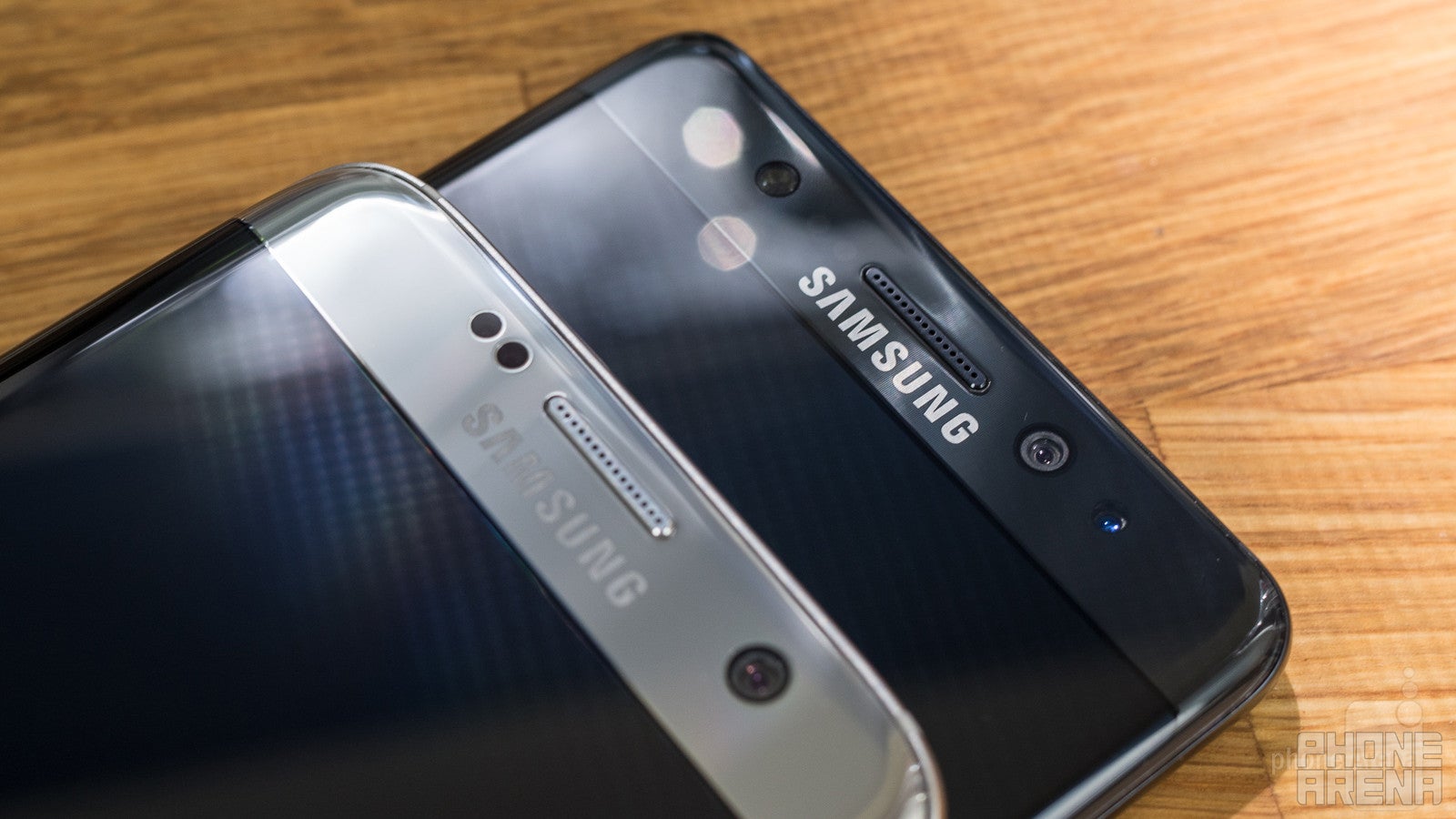
We really didn't expect the Note 7 to deliver an appreciably different voice call experience from what we got on the Galaxy S7 edge, and Samsung didn't disappoint. That's not to say that there's not a little room for improvement, but with things as good as they are already, we can understand if there's little motivation to add an extra coat of polish.
Battery
Despite the Note's size, the GS7e picks up the battery-capacity crown
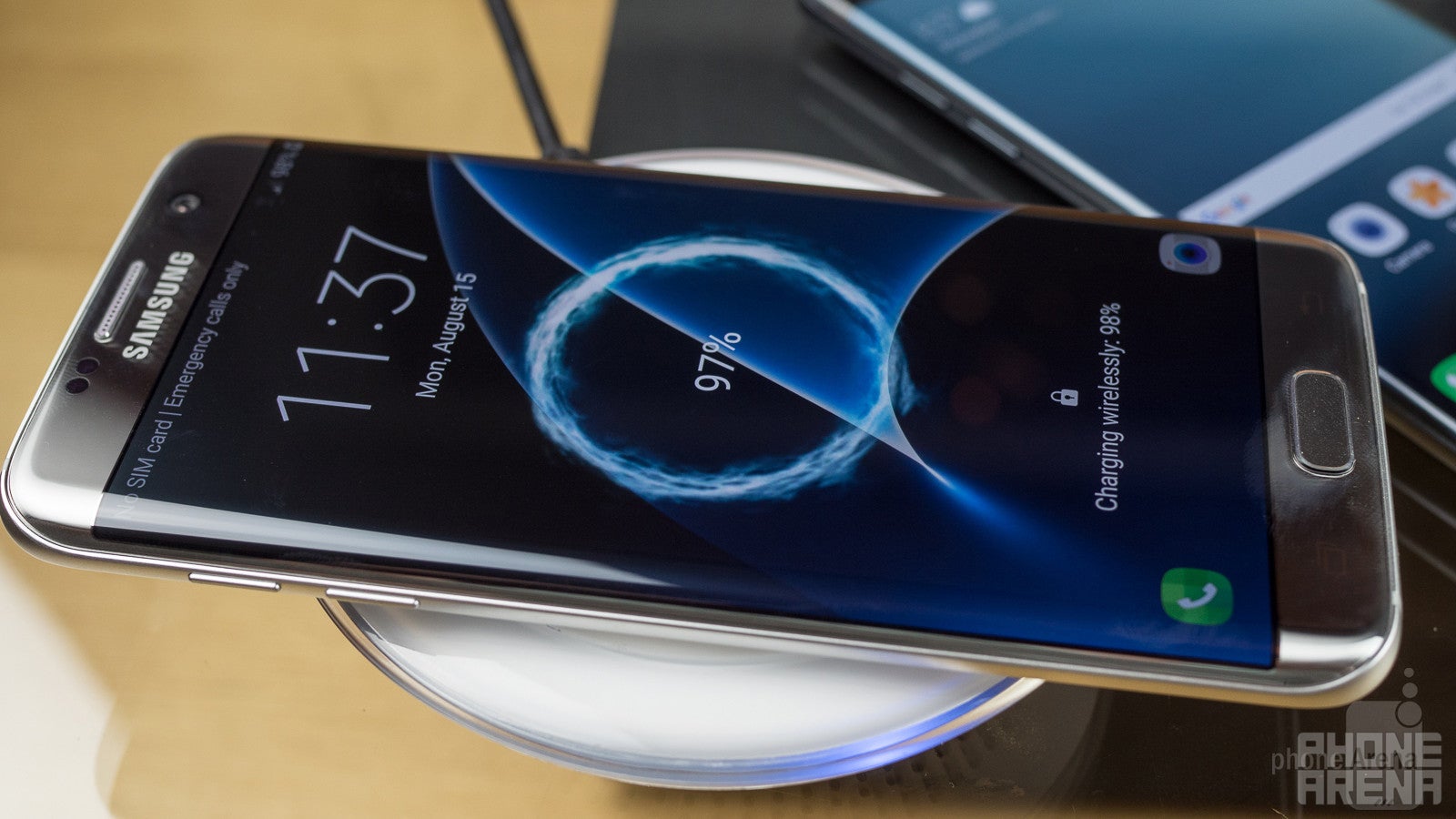
This comparison has so far been dominated by the Note 7 and Galaxy S7 edge competing at the same level, or occasionally seeing the Note 7 pull ahead of the older phone, that it's a special treat to have the GS7 edge take the lead for once. It's not by much, mind you, but despite the handset's physically smaller size, the Galaxy S7 edge actually houses a slightly larger battery than the Note 7 – to the tune of 100mAh.
That doesn't ultimately make a huge impact on battery life – just like the GS7 edge, the Note 7 clocks around seven hours in our tests – but it's still nice to see Samsung doing all it can to cram the largest batteries into its phones given available space. And with Note 7, we suppose some of that inevitably had to go to the S Pen.
Conclusion
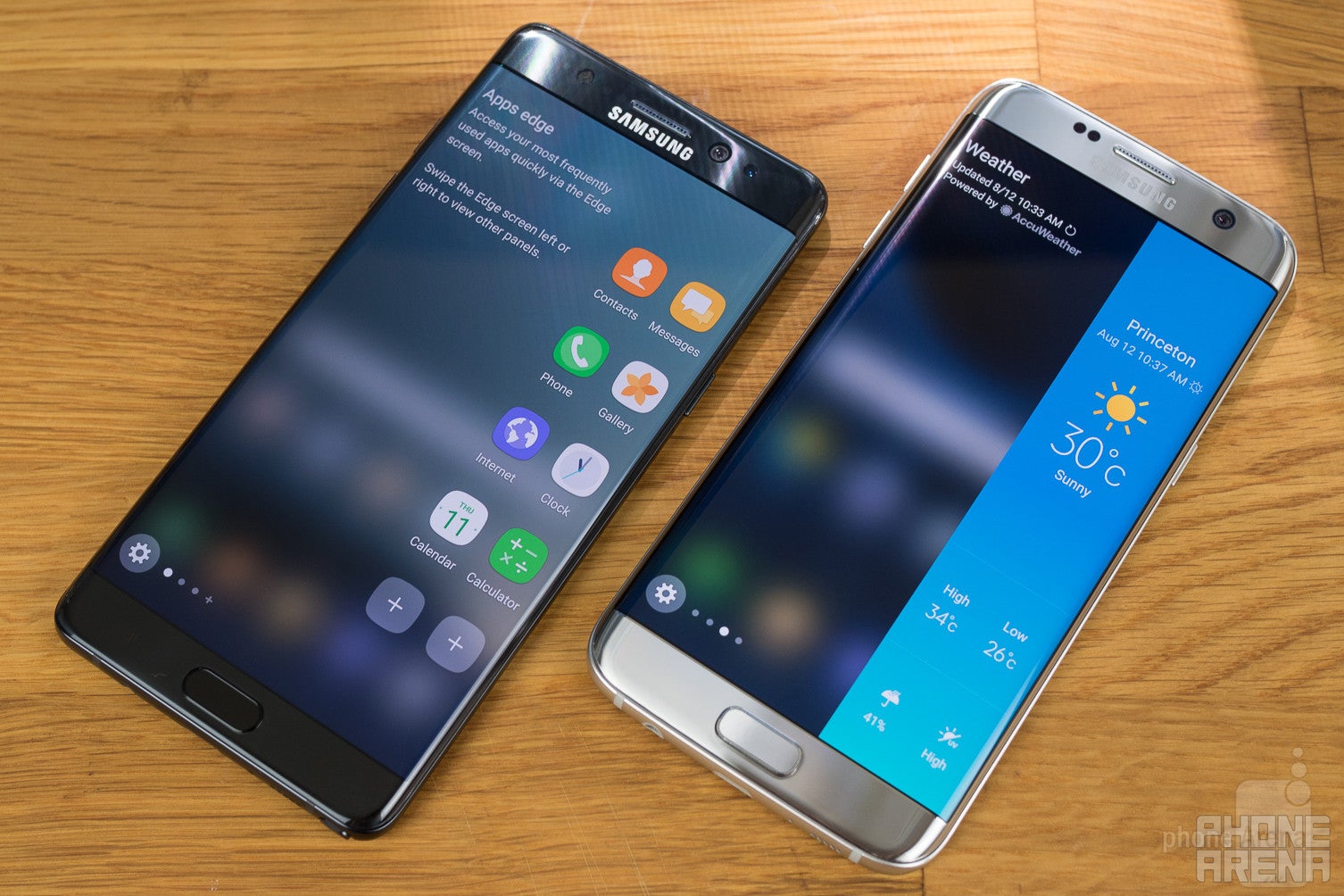
Samsung's always seemed a little confused about what options it wanted to offers shoppers in the phablet space: how large a handset, with or without a curved-edge display, and with or without the Note's S Pen stylus. It remains to be seen if we'll get anything like a Galaxy S7 edge+ (don't hold your breath), but at least with this year's lineup Samsung's simplifying the question: do you want smaller and touch-only, or slightly bigger and the stylus?
By taking things like processing power and camera quality out of the equation, Samsung's letting consumers focus on the design decisions that really change the way we interact with phones – and in doing so, is hopefully learning a little more about what we as phone users want. That's of special importance to us after seeing how past buyer-trend studies had led the company to decisions like not bringing the Note 5 to Europe; with this year's GS7 edge and Note 7, perhaps Samsung's finally come up with a pair of options that will resonate with shoppers around the globe.
We also see the Note 7 push past aspects of its stuffier image as Samsung's productivity phone, with a focus on media playback and even interactive experiences with the new Gear VR helping to soften the Note's reputation. And with the return of waterproofing allowing users to relax a little around the admittedly still super-expensive phone and enjoy themselves a bit, perhaps Samsung will encourage a new generation of Galaxy users to move beyond the familiar GS7/edge options and see what a stylus (and a few other bells and whistles) can do to add to their phone-using experience.
.
Samsung Galaxy Note 7
Pros
- New S Pen is a solid improvement overthe Note 5's
- 64GB storage plus microSD expansion isfull of win
- Waterproof design is a welcome return
- Iris scanner pushes limits – even ifit's not quite there just yet
Samsung Galaxy S7 edge
Pros
- Slightly sharper display than the Note
- No S Pen means room for a biggerbattery
- More affordable than the Note 7 (at themoment)
- Works with your existing microUSBaccessories

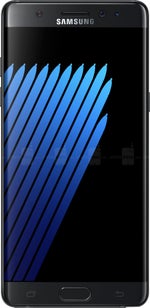
























Things that are NOT allowed: